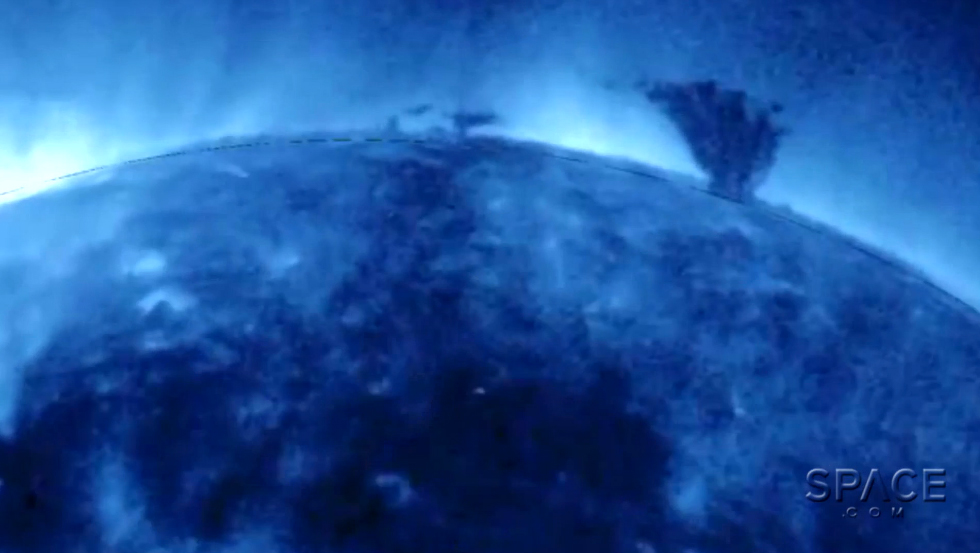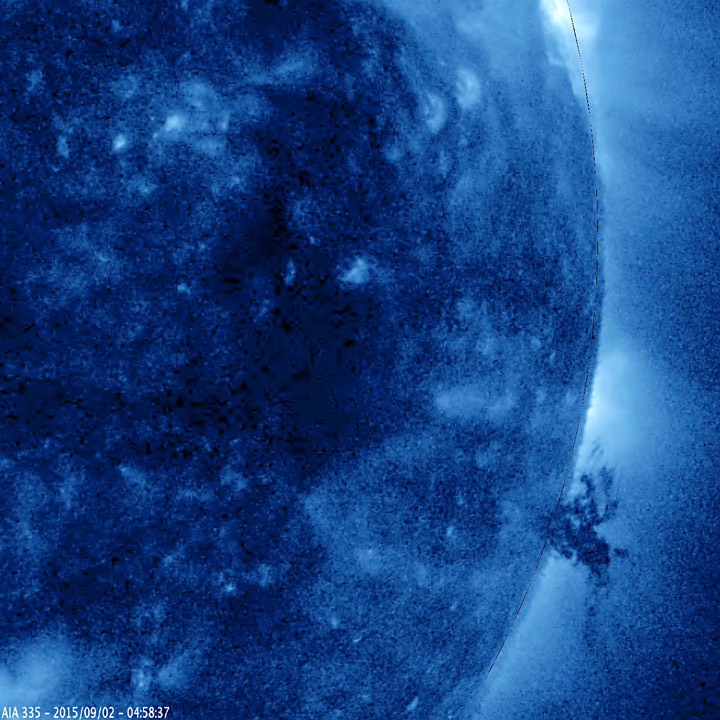5-Million-Degree Plasma 'Tornado' Rages on the Sun (Video)


A giant, swirling plume of superheated plasma churned above the surface of the sun for 40 hours last week while a NASA spacecraft looked on.
NASA's sun-studying Solar Dynamics Observatory (SDO) captured dramatic time-lapse video of the solar tornado, which raged from Sept. 1 through Sept. 3.
The mass of plasma "was stretched and pulled back and forth by powerful magnetic forces but [was] not ripped apart in this sequence," SDO team members wrote in a description of the video. "The temperature of the ionized iron particles observed in this extreme ultraviolet wavelength of light was about 2.8 million degrees C (or 5 million degrees F)."
This isn't the first solar twister SDO has observed. Last year, for example, the spacecraft recorded video of an enormous tornado spinning off the sun. And in 2011, SDO watched as another tornado — this one about five times the size of Earth — gyrated at speeds of up to 186,000 mph (300,000 km/h).
For comparison, tornado wind speeds here on Earth top out at around 300 mph (480 km/h).
The $850 million Solar Dynamics Observatory mission, which launched in February 2010, studies the sun with three different instruments, collecting data that help scientists better understand the solar magnetic field and space weather.
SDO was the first mission launched under NASA's Living With a Star Program, which is probing the causes of solar variability, and the impacts of this variability on Earth.
Breaking space news, the latest updates on rocket launches, skywatching events and more!
Follow Mike Wall on Twitter @michaeldwall and Google+. Follow us @Spacedotcom, Facebook or Google+. Originally published on Space.com.

Michael Wall is a Senior Space Writer with Space.com and joined the team in 2010. He primarily covers exoplanets, spaceflight and military space, but has been known to dabble in the space art beat. His book about the search for alien life, "Out There," was published on Nov. 13, 2018. Before becoming a science writer, Michael worked as a herpetologist and wildlife biologist. He has a Ph.D. in evolutionary biology from the University of Sydney, Australia, a bachelor's degree from the University of Arizona, and a graduate certificate in science writing from the University of California, Santa Cruz. To find out what his latest project is, you can follow Michael on Twitter.

